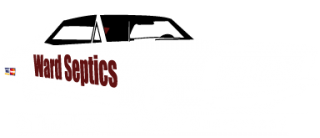Septic systems collect water and waste from toilets. Once inside the tank, it breaks down the solid matter into ‘sludge’ which then allows the fluids to exit the tank safety into underground dispersion areas called absorption trenchers or drain fields.
Does my septic tank need to be completely buried?
Yes, a septic tank musty be buried, with an access opening to allow for easy access for maintenance.
How deep can my septic tank be buried?
This can be determined by the company installing the tank and be dependent on how they have engineered their tanks. Common guides are six feet deep and ten feet away from the building.
How do I determine the size of my septic tank?
Choosing the size of the tank you require will depend on the number of rooms in your home, or the size of your household.
What is an absorption trench?
This is a trench where the treated fluid from the septic system is dispensed once solids and liquids have been separated.
What length of drain do I need?
The length of drain required is determined by the type of soil and number of bedrooms in your home. It is best to seek information from the Department of Health in accordance with your local area.

How do I know that my septic system is failing?
Common signs that your tank is failing and requires maintenance are;
- Slow draining water, from sinks
- Gurgling noises from the plumbing or drains
- Sewage blockages
- Waste overflow from the tank itself
- Stagnant or standing water around the tank and leach field.
- Bright green patches in the grams, even when there has been little to no rain.
- Unpleasant smells
How do I clean my septic system and tank?
Engage the services of a reputable and local tank cleaning company, such as Ward Septics. Using the most advanced technology, the tank is cleaned efficiently, and uses the trucks’ own hydraulics system, so no noisy and separate motor is required. The powerful jet cleaning machine technology can clean the worst conditions and blocked systems, allowing the system to be flushed and working as they should.

What takes place during a septic pumping service?
- Access septic tank
- Tank will be pumped out
- Tank is washed out using a powerful jet system.
- Visual report and complete tank audit, letting you know if any further maintenance is required.
- Tank is closed
How often do I need to have my septic tank pumped?
Every 3-5 years is the recommendation to keep your tank operating efficiently.
Will there be odours while and/or after the septic pumping service?
A tank that is well maintained should be odour free, if there is a smell this could be a sign that your tank requires further maintenance.
What cleaning/laundry products are safe for use with a septic tank?
Products containing bleach are safe to use in smalls amounts, mild detergents for laundry and washing are generally safe to use. One of the better options is low sudding, and if you must use gloves with the chemical, this is generally and indication that is might not be suitable for your tank. As with all chemicals it is best to read the direction instructions before use.

Arrange a Tank from a Professional
Septic cleaning can vary in price. Depending on the size of your tank, call our team on 0438 315 514 for a price estimate. We service the Central Coast and Hunter regions.








